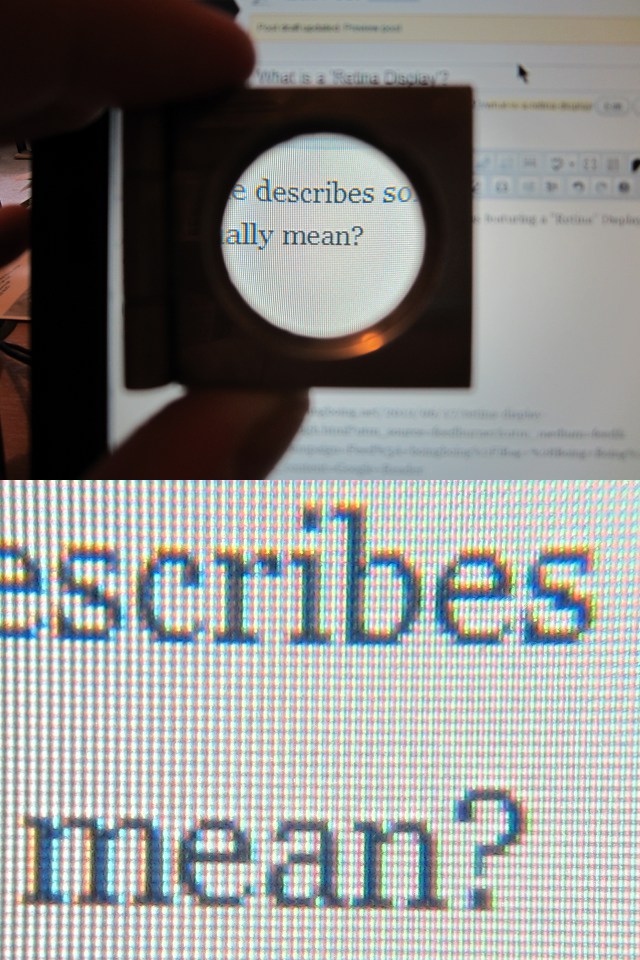Apple describes some of its products as featuring a “Retina” display. But what does that actually mean?

The individual pixels (each one made up of three red, green and blue subpixels) that make up my laptop’s display, viewed through a magnifier.
The main claim that Apple makes of its Retina display is that the pixels used are so small that they are too small to be seen individually by the human eye. In physics terms, this means that these pixels are below the resolving power of the human eye.
The resolving power of the human eye is about 60 arcseconds, or 0.0167 degrees. This means that any two objects separated by an angle smaller than this will appear as one object to the eye. The minimum vertical or horizontal spacing between two items which are visible as separate items is therefore given by dtan(θ) where d is the distance to the items and θ is the resolving power of the eye.
Assuming that the display in question is held or viewed at a distance of 30 cm from the eye, this distance is found to be 0.0873 millimetres. This means that a person with normal vision will be able to discern individual pixels on any display with fewer than 11.5 pixels per millimetre.
![]()
As can be seen from the graph above, the screen of the iPhone 4 does possess a greater density of pixels than the human eye can perceive; but the iPad 3 and the just-released 2012 MacBook Pro do not. (None of this matters of course, because “Retina” is just a trademark that Apple uses as a marketing term.)
An argument could be made, in the case of the MacBook Pro, that the distance between the screen and the eye would usually be larger than 30 cm. If the distance was 50 cm that would make the resolution of the eye 6.88 pixels per millimetre and therefore give the 2012 MacBook Pro a “true” retina display.